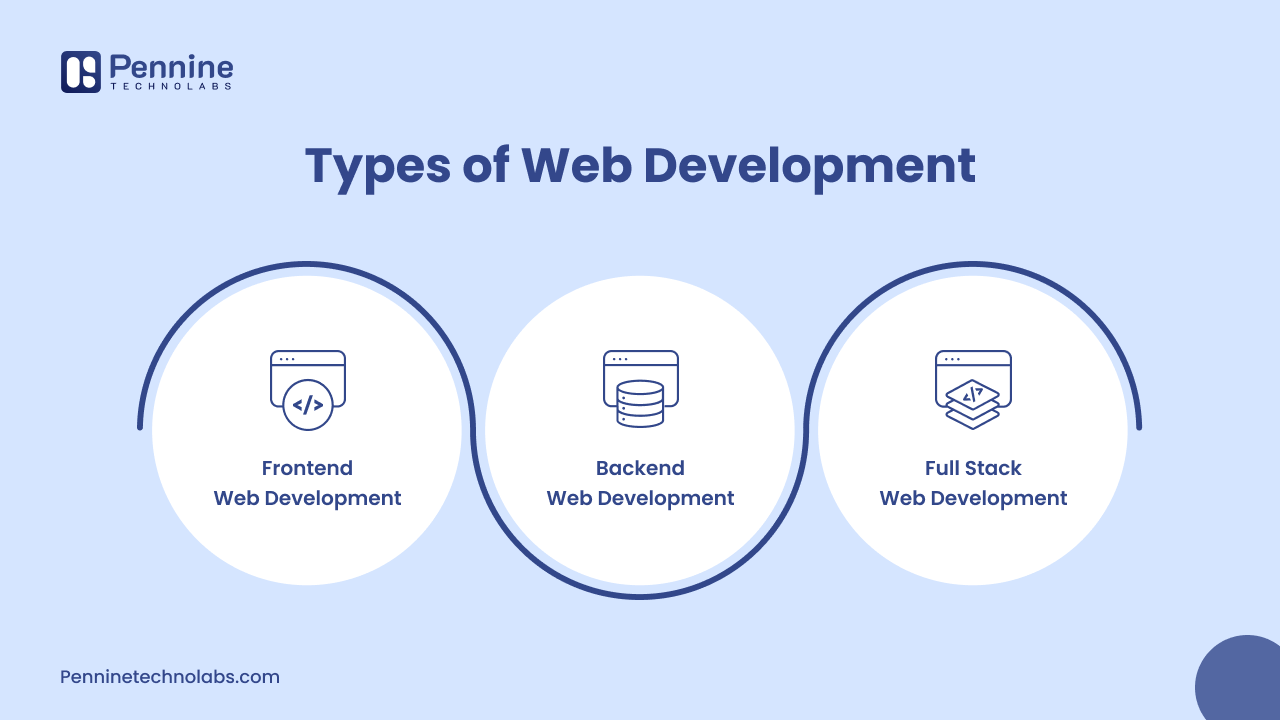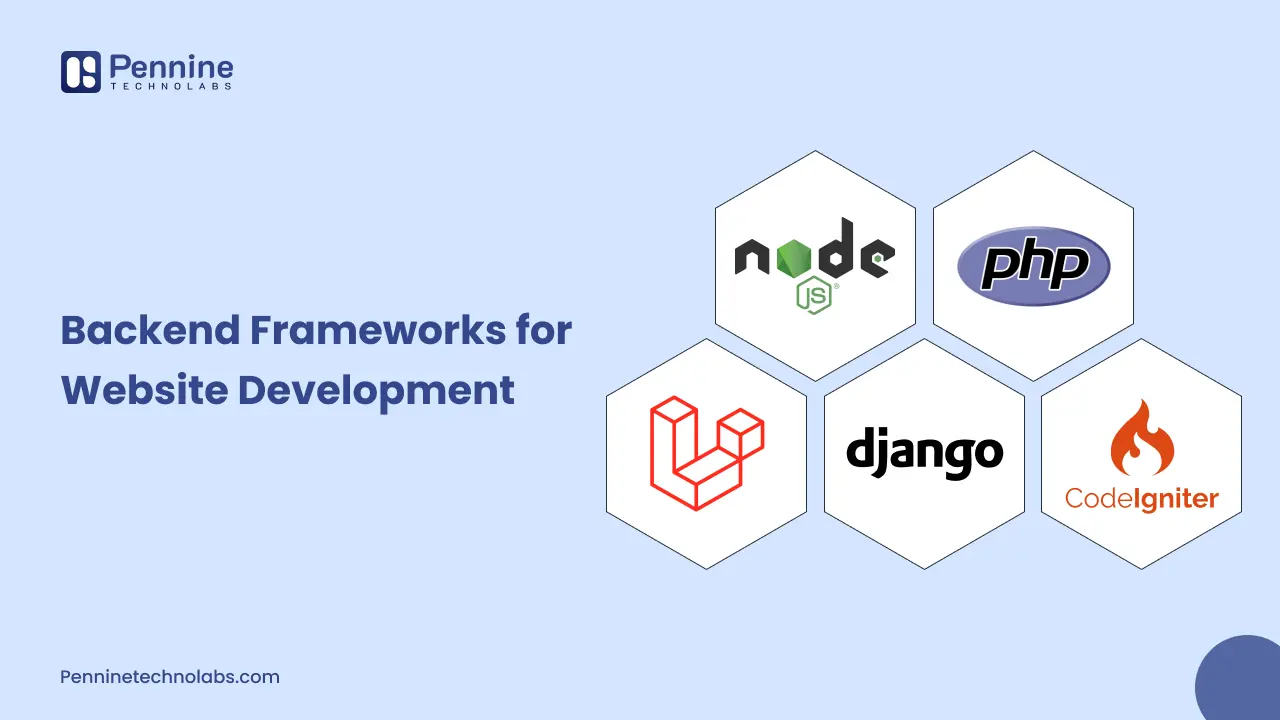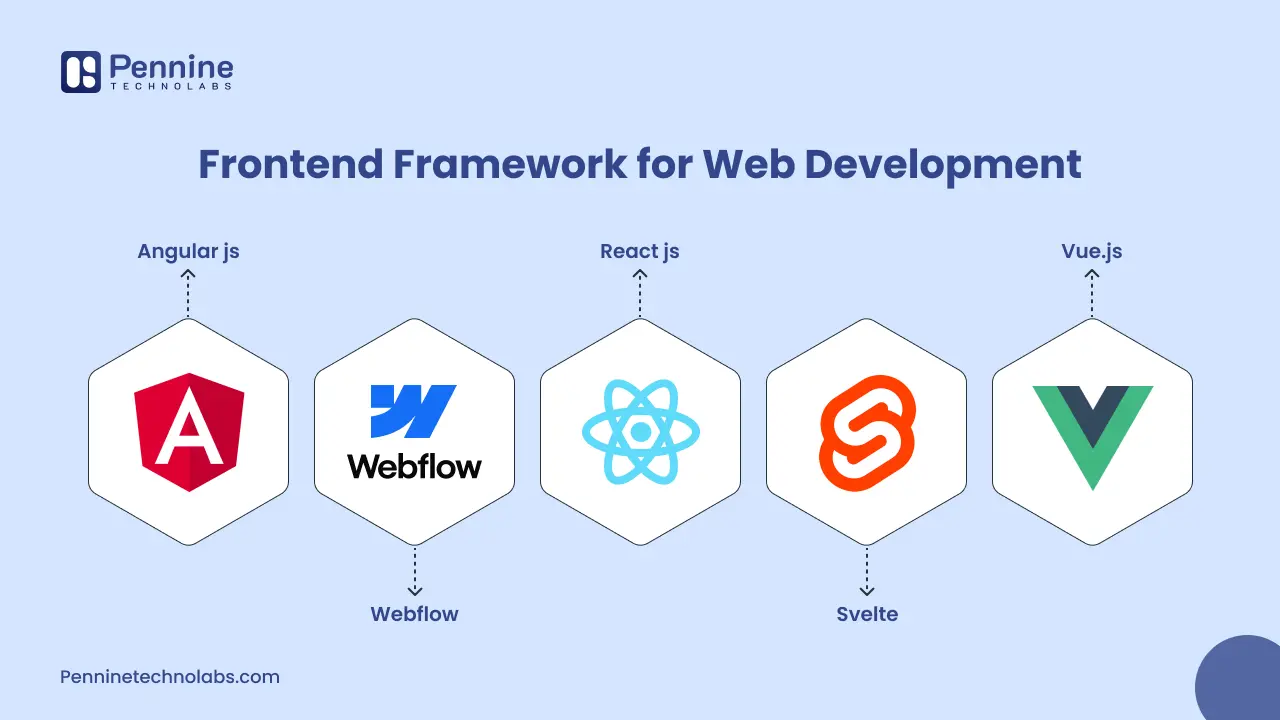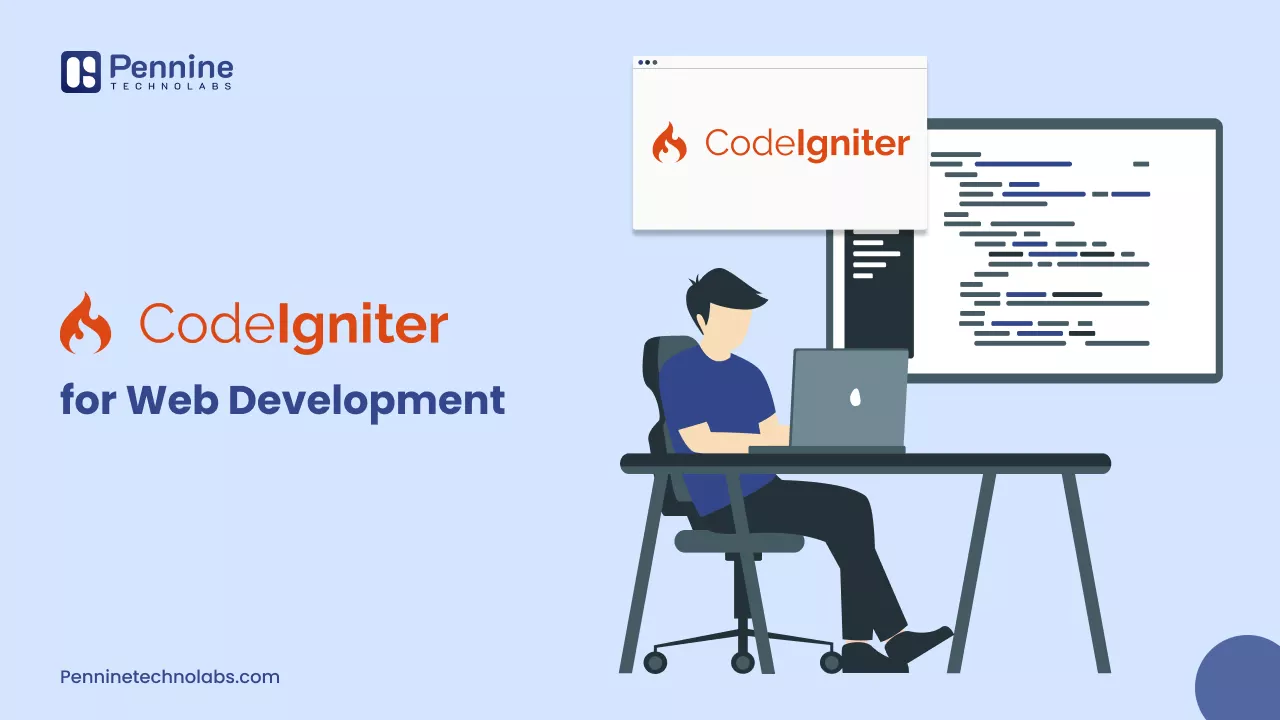Quick Summary: This guide explores the various types of web development, including front-end, back-end, and full-stack, along with their key features, technologies, and benefits. Learn how each type works, which is right for your business, and how Pennine Technolabs can help you grow with the perfect solution.
Introduction
Websites have become the backbone of modern business. Every company depends on well-built websites and applications, from small startups to global enterprises, to connect with its audience. A good website attracts visitors, guides them with correct information, and converts them into customers. This guide will help you choose the right type of web development, their facilities, and the best approach for your business.
Web Development: An Overview
Web development is the process of creating, designing, and maintaining websites and web applications. It comprises several topics, including coding, UI/UX design, database management, and performance optimization. The goal is to create a site that not only looks great but also performs well on all devices, loads quickly, and provides visitors with a seamless experience. Modern web development uses a combination of programming languages, frameworks, and equipment to create everything from simple landing pages to complex enterprise platforms.
Benefits of Web Development Services
A professional website is better than your digital brochure to boost your Business growth engine.
User Experience: A structured website ensures easy navigation, allows users to find what they need, and facilitates interaction without confusion. Smooth navigation keeps visitors engaged for an extended period.
Better performance: Optimized code reduces loading time, which increases the SEO rankings and prevents users from exiting due to slow performance.
Scalability: A strong development foundation allows you to add features, pages and integration as your business grows, everything without rebuilding it.
Brand Authority: A modern, secure, and attractive website creates reliability and keeps your business trustworthy.
Search engine visibility: Implementing search-friendly coding practices and optimizing content helps your site rank higher on Google, resulting in increased organic traffic.
Different Types of Web Development
Businesses can take strategic decisions based on their goals, budget, and user expectation,s with types of web development in the USA and India:
Front-end Development
Front-end development deals with users on a website, encompassing everything they view and interact with. It focuses on layout, design, and responsiveness.
Front-end Framework Features:
- User Interface Creation – Design intuitive and visually appealing layouts that align with your brand identity.
- Mobile Responsiveness – This ensures that the site works properly on smartphones, tablets, and desktops.
- Cross-browser compatibility ensures quality performance across Chrome, Safari, Firefox, and other browsers.
- Interactive elements – Add animation, forms, and buttons that make the site attractive and easy to use.
Front-end Technologies:
HTML defines the structure of web pages, including headings, links, and images, serving as the skeleton of every website.
CSS: Controls styling and layouts, allows designers to create responsive designs, animations, and color schemes for consistent branding.
JavaScript: Interactive features, sliders, pop-ups, and real-time content bring websites to life.
Angular: A robust TypeScript-based structure is ideal for creating a scalable single-position application with a clean architecture.
React: A popular library to create reusable UI components, enabling rapid rendering and better performance for mass applications.
Vue.js: A flexible framework that is easy to integrate, is perfect for building progressive web apps, and enhancing existing projects.
Back-End Development
Back-end development is a powerful engine of the website. It manages data, security, and server connections, which the user does not see.
Back-End Framework Features:
- Database Management: Maintaining security and data integrity, conducts large-scale data versions and recovery.
- Server-side logic: Backend handles user requests, processes information, and offers results in real time.
- Security: Protects sensitive data using encryption, authentication protocols, and role-based access controls.
- Performance Optimization: It balances the server load to ensure the website performs smoothly, even under heavy user traffic.
Back-end Technologies:
Python is a versatile language for building secure, scalable applications, commonly used in conjunction with frameworks like Django and Flask.
PHP: This is a mature and widely accepted scripting language that powers WordPress, WooCommerce, and other dynamic websites.
Node.js allows running JavaScript on the server, enabling the chat system and live dashboard, as well as server-side applications.
PostgreSQL: A feature-rich open-source relational database is known for its credibility, advanced features, and ability to handle enterprise workload.
MySQL: It is a widely used relational database solution that is preferred for transaction applications, CMS system,s and eCommerce platforms.
MongoDB: A NoSQL database designed for flexibility and scalability, collects data in documents such as JSON for modern applications.
Full-Stack Web Development
Full-stack development encompasses both front-end and back-end functions, enabling businesses to deliver integrated solutions under a single team.
Full-Stack Web Development Features:
Complete Project Ownership: It enables the management of everything from design to deployment.
API Development: It builds RESTful and GraphQL API for smooth communication between the front-end and back-end.
Version Control: Uses Git to track code changes and enable team cooperation.
Deployment and Monitoring: CI/CD handles pipelines and performance monitoring to run your site smoothly.
Full-Stack Technologies:
MERN Stack (MongoDB, Express.js, React, Node.js): A popular JavaScript-based stack for full-stack applications that offers rapid performance and easy scalability.
MEAN Stack (MongoDB, Express.js, Angular, Node.js): Ideal for enterprise applications that require strong structure and maintenance.
LAMP Stack (Linux, Apache, MySQL, PHP): A traditional stack is still used to create highly secure and safe web applications.
JAMstack: High-demonstration with rapid load speed combines JavaScript, API, and Markup for static and dynamic websites.
Database:
MySQL: Provides a balance of reliability and speed for transactional systems.
PostgreSQL: Supports complex queries and large-scale enterprise data operations.
MongoDB: Ideal for flexible data models and applications requiring rapid scaling.
Deployment & Version Control: Git for collaborative development, Docker for containerization, and CI/CD pipelines for automatic testing and deployment.
API: REST API and GraphQL for seamless communication between clients and servers, reducing unnecessary data transfer.
How to Choose the Right Type
Choosing the right approach depends on your project goals, budget, and requirements:
For attractive websites: Front-end development is a priority, ideal for portfolio, blog, and marketing websites.
For data-driven applications: Back-end development is essential, perfect for dashboards, booking systems, and ecommerce platforms.
For complete solutions, Full-stack development provides flexibility and rapid deployment, allowing a team to handle the entire project.
You should also consider your budget, timeline, scalability requirements, and whether you want a dedicated front-end or back-end team.
Grow with Pennine Technolabs
Pennine Technolabs creates websites and applications that help businesses grow. Our experts specialize in front-end, back-end, and full-stack development, ensuring that your project is adapted to speed, safety, and scalability. Whether you need a simple business site or a complex web app, we deliver solutions that drive results. Start creating your digital success today with our web development services.
FAQs for Types of Web Development
What is the difference between front-end and back-end development?
The front-end is what users see and interact with, while the back-end includes data processing, logic, and server communication.
Is full-stack development good for startups?
Yes, it is cost-effective and helps startups create a faster, complete solution, as the team handles both layers.
How long does web development take?
Simple sites may take a few weeks, while complex platforms with integration may take several months.
Which technology stack is best for web development?
It depends on your goals. For example, React is great for interactive front-end, while Node.js works well for real-time applications.



